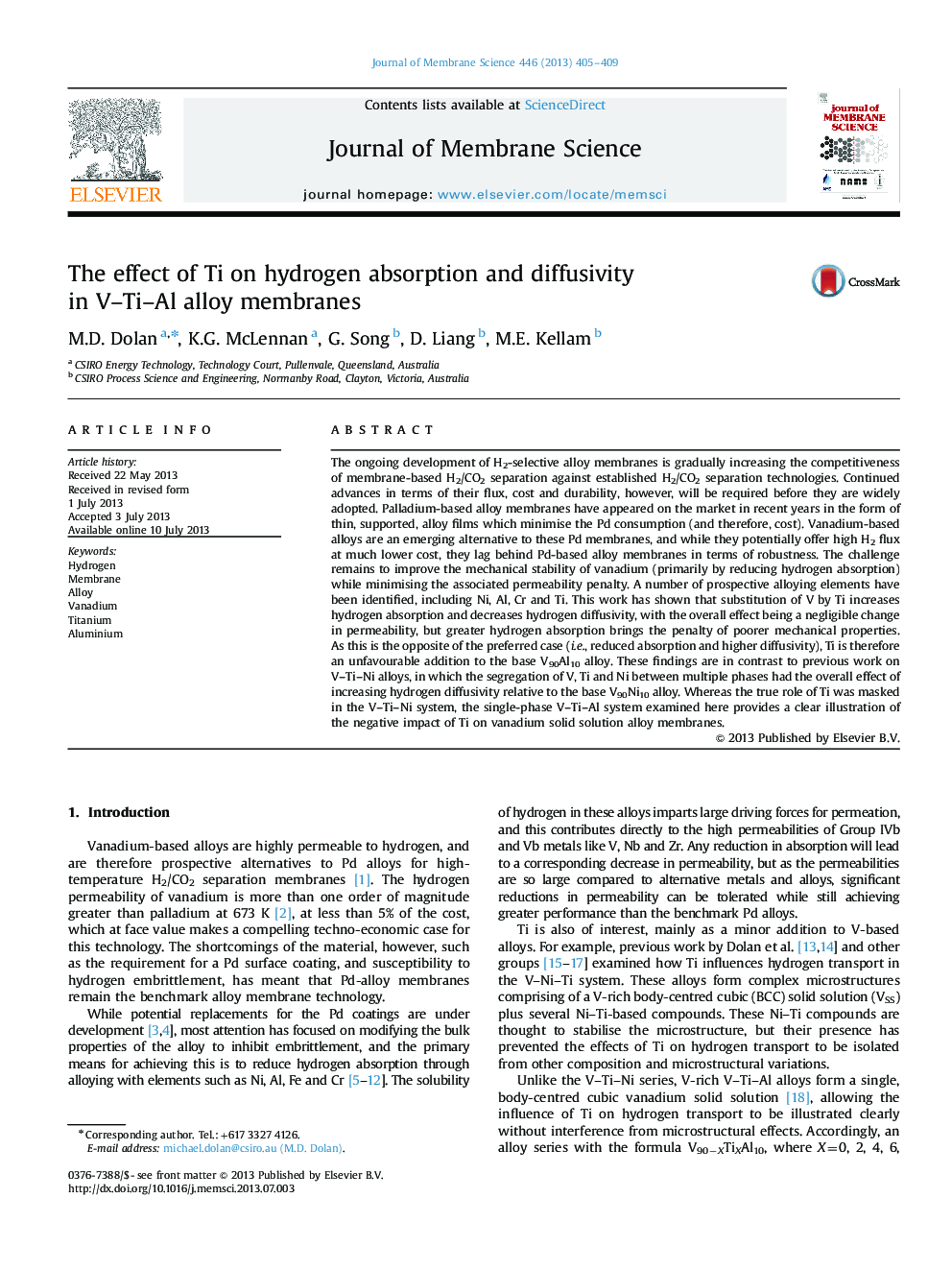| Article ID | Journal | Published Year | Pages | File Type |
|---|---|---|---|---|
| 634069 | Journal of Membrane Science | 2013 | 5 Pages |
•Addition of Ti to V90Al10 results in single-phase vanadium solid solution.•Ti increases the absorption of H by the VSS phase.•Ti decreases the diffusivity H through the VSS phase.•The H diffusivity increases with increased concentration of dissolved H.
The ongoing development of H2-selective alloy membranes is gradually increasing the competitiveness of membrane-based H2/CO2 separation against established H2/CO2 separation technologies. Continued advances in terms of their flux, cost and durability, however, will be required before they are widely adopted. Palladium-based alloy membranes have appeared on the market in recent years in the form of thin, supported, alloy films which minimise the Pd consumption (and therefore, cost). Vanadium-based alloys are an emerging alternative to these Pd membranes, and while they potentially offer high H2 flux at much lower cost, they lag behind Pd-based alloy membranes in terms of robustness. The challenge remains to improve the mechanical stability of vanadium (primarily by reducing hydrogen absorption) while minimising the associated permeability penalty. A number of prospective alloying elements have been identified, including Ni, Al, Cr and Ti. This work has shown that substitution of V by Ti increases hydrogen absorption and decreases hydrogen diffusivity, with the overall effect being a negligible change in permeability, but greater hydrogen absorption brings the penalty of poorer mechanical properties. As this is the opposite of the preferred case (i.e., reduced absorption and higher diffusivity), Ti is therefore an unfavourable addition to the base V90Al10 alloy. These findings are in contrast to previous work on V–Ti–Ni alloys, in which the segregation of V, Ti and Ni between multiple phases had the overall effect of increasing hydrogen diffusivity relative to the base V90Ni10 alloy. Whereas the true role of Ti was masked in the V–Ti–Ni system, the single-phase V–Ti–Al system examined here provides a clear illustration of the negative impact of Ti on vanadium solid solution alloy membranes.
